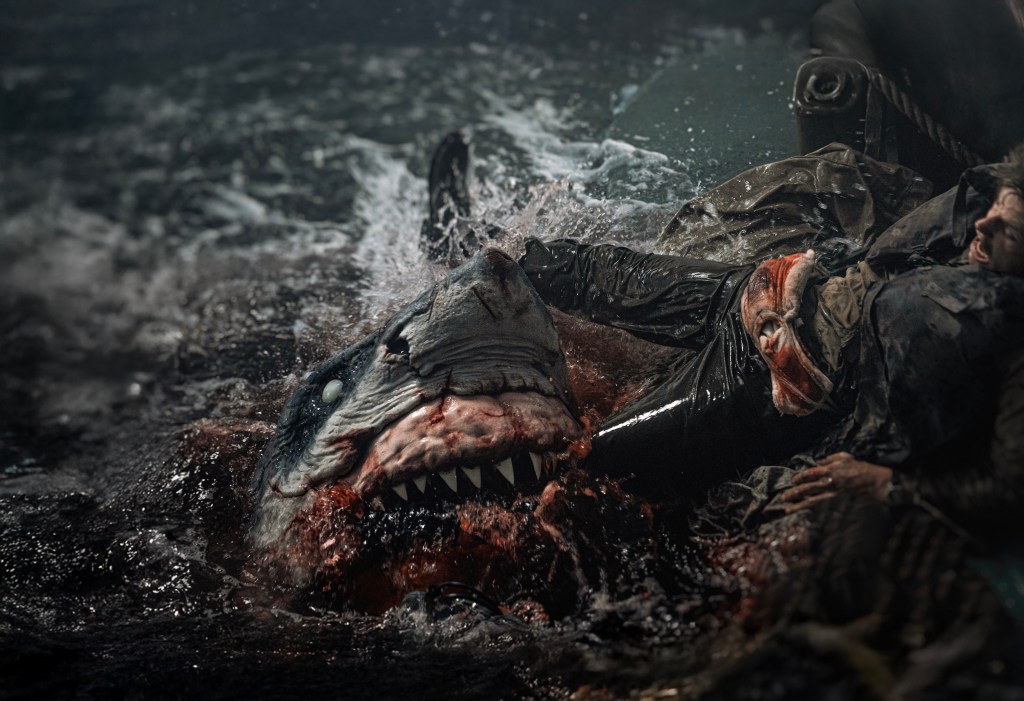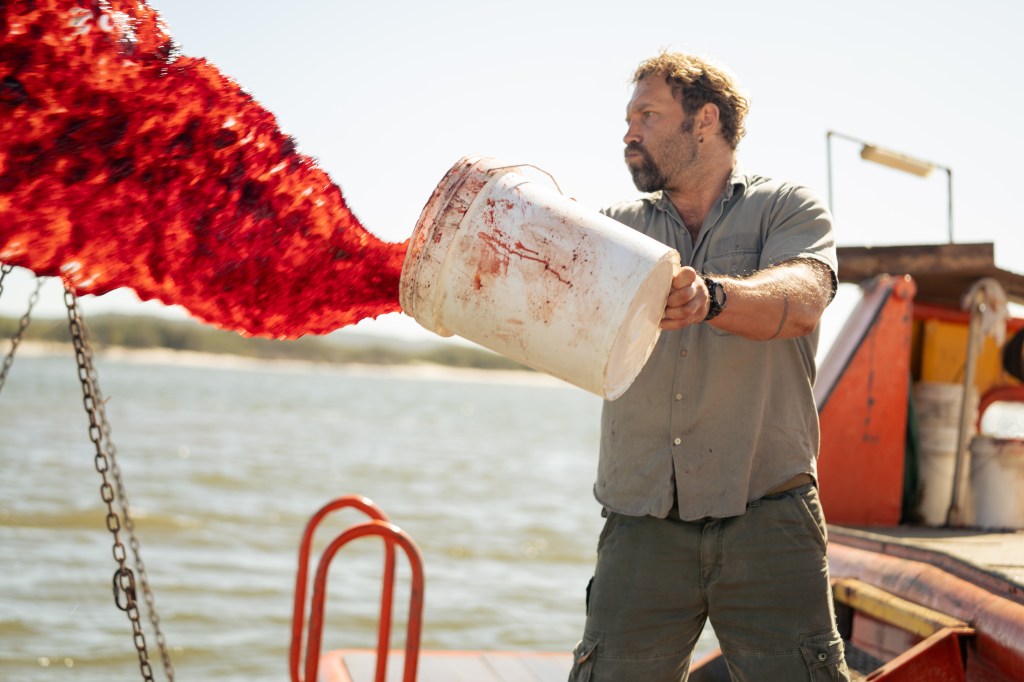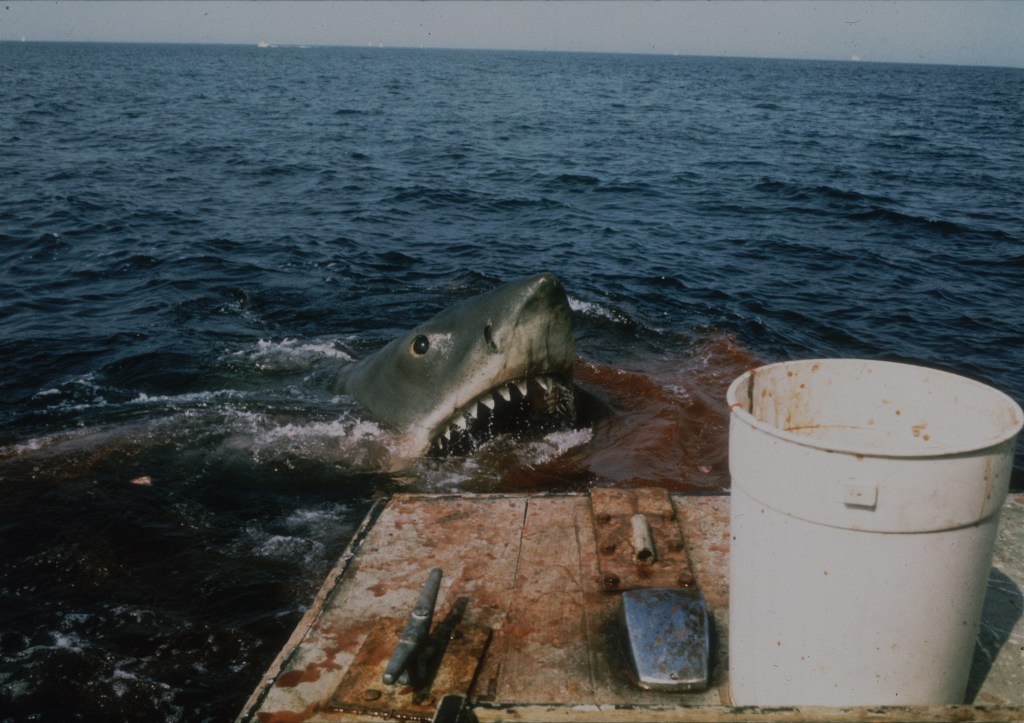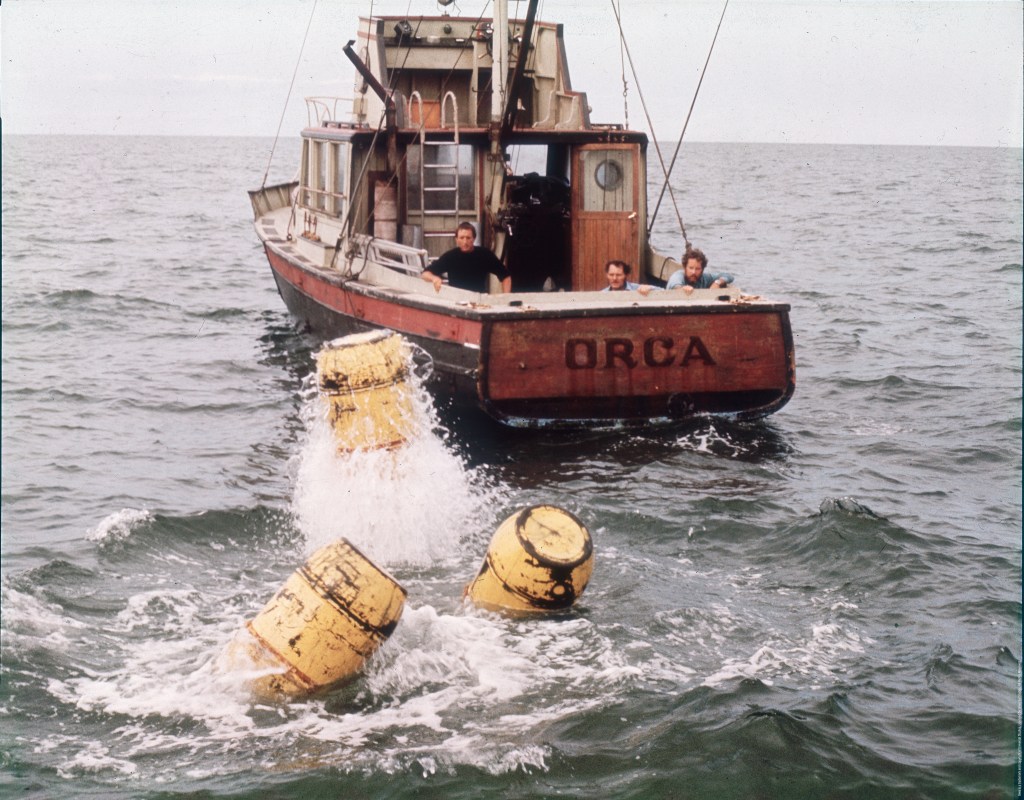Bite on this! Why we’re obsessed with bloody shark flicks
Our obsession with shark movies shows no sign of abating as we explore a panoply of creature features and celebrate the 50th anniversary of Jaws.

Last month a new shark film, The Beast of War, hit cinemas. It’s the story of Aussie troops fighting off hungry sharks in the Timor Sea. It follows two other recent local efforts, Dangerous Animals, in which a serial killer uses sharks to dispense his victims, and Fear Below, in which divers retrieving bullion from a sunken car run into shark trouble.
The past few years alone have seen sharksploitation efforts such as The Reef: Stalked; Meg 2: The Trench; Great White; Into the Deep; Lone Star Shark and Under Paris. Upcoming efforts include Shiver, Deep Water and The Bay, with plenty more on the way.
What is it about shark films that are so compelling? After all, far more people are killed every year by mosquitos, hippos, lions, snakes, freshwater snails, dogs, crocodiles and scorpions – not to mention other humans. Yet, when was the last time you saw a killer hippo movie? Or a lion or dog picture where the animals weren’t depicted as being cuddly?

First of all, it’s a matter of branding. There are few cooler animal monikers than “shark”. It’s short, sharp, evocative and ends with a “k” – and sounds good. Then there’s its look – the teeth, shape, fins, snout and dead eyes.
Sharks present well on movie posters and screen – it’s hard to find an unscary one. They have a primeval appeal, dating back to the dinosaurs. They are almost always associated with violence – even children’s earworm classic Baby Shark is built around death – “let’s go hunt, doo doo doo doo doo doo”.
Mind you, you could say all of the above for crocodiles and scorpions, though I’m not sure if they’ve inspired an iconic song.
You might like
when sharks kill, it’s not hard to make it visually interesting, with all that blood, splashed water and screaming
The main reason sharks have become the number one cinematic animal antagonist is the way they dominate humans in the water. Scorpions, lions and the others do their killing predominantly on land, where humans generally feel safe or at least feel that the battle is equal. There is always somewhere to run, hide, grab a weapon, etc. Even croc-infested creeks are never that far, it seems, from sanctuary.
But sharks are apex predators in the ocean, which feels endless and vast. We can’t swim or move as fast as a shark. And if you get in a fight with one, unless you’ve got some overwhelming advantage (like a weapon, a cage or another person in the water who looks tastier), you know who’s going to win.
And when sharks kill, it’s not hard to make it visually interesting, with all that blood, splashed water and screaming. There’s less risk of it seeming silly, which is the eternal risk of a killer animal movie (the deadliest animal on Earth is the mosquito, but good luck making that cinematically compelling).
Furthermore, the fact that shark attacks take place in water justifies attractive cast members appearing without many clothes. It’s hard to get Blake Lively to strip off in, say, a killer grizzly bear flick, but for something like The Shallows, no problem, giving you a great poster.

Considering humans have long been terrified of sharks, the explosion in shark movies has been a surprisingly new phenomenon. There were shark movies before Jaws, such as The Sharkfighters, Shark! and Blue Water White Death, but shark movies didn’t come out in significant numbers until the 1975 Steven Spielberg blockbuster showed everyone how it was done.
And while Jaws did prompt a boom in the genre, as well as tales of piranhas, killer whales, grizzlies and bees, sharksploitation didn’t really kick in until the 2000s when developments in filmmaking technology (notably CGI) made shooting shark footage a lot cheaper. This was crucial, since anything made on water is always expensive.
Subscribe for updates
It helped, too, that the growth of DVD/DTV/Streaming saw an increase in the market for not-that-great shark movies, and audiences don’t seem to mind what country they came from. Thus, the 21st century has seen the genre thrive, with numerous shark “franchises” – The Deep Blue Sea, 47 Meters Down, Maneater, The Reef, Sharknado, Sharktopus – not to mention variations such as shark-related biopics (Soul Survivor) and very loose adaptations of true stories (USS Indianapolis: Men of Courage).

Australia, with its long coastline and rich history of shark attacks – including a fatal mauling of actress Marcia Hathaway in Sydney Harbour in 1963 – has a strong track record in shark cinema. Underwater shark sequences for Jaws were famously shot off the South Australian coast by Ron and Valerie Taylor, who had their own little shark footage cottage industry for several decades, including Shark Hunters, Slaughter at Saumarez and Operation Shark Bite.
There have been numerous Aussie shark features. In addition to the ones already mentioned there’s Bait, the ’80s Gold Coast-set Miami Vice rip-off Shark’s Paradise and the I-lost-my-leg documentary Savage Shadows.
Australia has been used as a filming location for shark movies set in other countries (The Shallows), provided key talent (The Deep Blue Sea, Finding Nemo) and real-life inspiration for stories (Open Water).

Admittedly, many, if not most, shark movies are bad, though I don’t think the ratio of bad-to-good is different from other exploitation genres. I’ve written a shark movie (unproduced but I’m open to offers) and they’re harder to pull off than they look, trust me. It’s easy enough to get your characters into the water but very tricky keeping them in there, and alive, for 90 minutes without it seeming silly and/or costing a zillion dollars. The ones that do it well are to be cherished, particularly Jaws, which is probably the most perfect film of all time.
Quality notwithstanding, the shark genre shows no sign of letting up. And while in real life these creatures are endangered, vital for our marine eco system, unfairly maligned and prosecuted (about 100 million are killed each year), next time you’re swimming by yourself alone in the ocean imagine what would happen if a Great White came past. That emotion – that fear – is what powers the genre.
Still, maybe it is time we tried a killer hippo movie. Those grumpy brats have had too good a press for far too long. Meanwhile, if you’re in a shark mood, can we suggest …
Watch the original summer movie blockbuster Jaws, with an Academy Award-winning score by John Williams, at a film-with-live-orchestra big-screen experience, accompanied on stage by The Metropolitan Orchestra Brisbane, conducted by Sarah-Grace Williams.
JAWS in Concert, Concert Hall, QPAC, November 22, 3pm and 8pm, qpac.com.au

